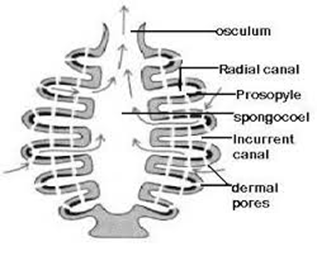Genetic code - Principle, Features & Discovery | Biology Blog
Genetic Code
Any biochemical process is ended up by the arbitration of the enzymes. These enzymes are consist of proteins. Every protein is cover of at least 20 amino acids, whereas the DNA is made up of only four nucleotides. The four nitrogenous bases of DNA will tell you all 20 amino acid sequences. All the genetic information for a character is coded in the nucleotide of DNA called Codon.
The sequence of nucleotide or nitrogenous bases in mRNA molecules which locked the information for protein synthesis and called as Genetic Code.
Discovery - In 1968 Nirenberg, Khorana &Holley have discovered genetic code. Nirenberg also received a noble prize for success in genetic code.
The problem in Genetic code - The major issue of genetic code was to resolve the perfect number of nucleotides in a codon that codes for a single amino acid.
Singlet Code - Since there are only four nitrogenous bases in mRNA ( A, U, G, C ) for 20 amino acids, a combination of only one or two nitrogenous bases can not provide sufficient code words for 20 amino acids. Therefore, the nucleotide to act as genetic codes must act in multiple units. If nucleotide act in units of two possible dinucleotide blending will be 4 * 4 = 16 but these are not sufficient to account for 20 amino acids. e.g.,A,U,G,C .
Doublet Codes - Despite having two nitrogenous bases that form amino acids, the four codons ( AA, AU, AG, AC) are formed which codes only 16 amino acids ( 4 * 4= 16 ).
Triplet Code – In 1954 Gamow told about codon that the three-nucleotide of mRNA together form a codon. It is called Triplet Codon. If the nucleotide is then assumed to be arranged in units of three, the possible trinucleotide blending will be 4 *4*4 =64. These 64 codons are enough for 20 amino acids.
Properties Of Genetic Code -
- Codes or Triplet – A codon of the modern genetic code comprise of three nitrogenous bases of mRNA in specific sequences.
- Codes are comma-less – There is no comma between the adjacent codons.
- Codes are non – overlapping – Codons are non-overlapping, which means the base in the m RNA is not used for different codons.
- The code is non-ambiguous: Non-ambiguous code means that a particular codon will always code for the same amino acid. In the case of ambiguous code, the same codon could code two or more than two different amino acids.
- Some codes act as start codons: AUG codon is the start or initiation codon In rare cases, GUG also serves as the initiation codon.
- Some codes act as stop codons: Three codons UAG, UAA, and UGA are the chain stop or termination codons. They do not code for any of the amino acids. These codons are not read by any tRNA molecules.
- The code is universal: The same genetic code is said to be present in all the kinds of living organisms including viruses and bacteria.
- The code has polarity: The code is always read in a fixed direction, i.e., in the 5’→3′ direction. In other words, the codon has a polarity.





Comments
Post a Comment